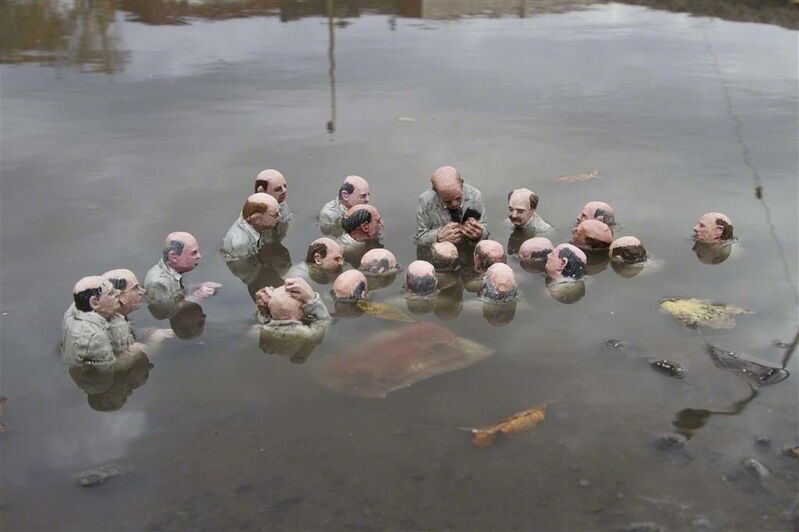American composer Armando Bayolo (b. 1973) was born in Santurce, Puerto Rico to Cuban parents. Early interest in music led him to high school at the Interlochen Arts Academy in Michigan, and eventually composition studies at Eastman (BM), Yale (MM), and the University of Michigan (DMA). He has been richly praised for his work across many genres, and he has received commissions and performances around the world as a result. His work has received many awards, including two Pulitzer Prize nominations. Bayolo is also a conductor and advocate for contemporary music. In that capacity, he leads Great Noise Ensemble, a Washington, DC-based contemporary music group. See more about him at his website, Great Noise Ensemble, New Music Box, and the Wind Repertory Project.
Bayolo wrote Dispatches from the Anthropocene in 2020 as the COVID-19 pandemic raged. The piece had its genesis in conversations between the composer and Andy Pease (yes that’s me), which began at the 2019 CBDNA National Conference following a performance of Bayolo’s Last Breaths. We were both interested in the idea of a substantial work for a smaller band. Bayolo tells the rest of the story in his program notes (to which I’ve added a few links):
The idea for Dispatches from the Anthropocene came about in conversations with Andy Pease, director of wind ensembles at Hartwick College, who suggested I listen to a podcast titled The Anthropocene Reviewed. While this piece was to be originally a commentary on climate change and its socio-political implications, the podcast focuses not only on the negative effects of human activity, but also positive ones. In that way, Dispatches from the Antrhopocene became more of a series of diary entries on the human condition and its journey to the 21st century.
The term “anthropocene” refers to our current geological period, defined by human activity as the dominant force affecting climate and the environment. “Manifest Destiny,” the first piece in the suite, is a fanfare that gradually falls apart, much like human activity can begin with the best of intentions, but can be derailed by hubris. The second movement, “Carousel of Progress,” is a more positive take on human ingenuity and inspiration, from the pyramids and the wheel, to the Internet and beyond. It’s followed by “Follow the Leaders,” a more negative view inspired by the miniature sculpture of the same name by the artist Isaac Cordal. In that sculpture, a group of men (“politicians discussing climate change”) are slowly drowning in a puddle as they discuss how to solve the problem that is gradually engulfing them.
Movement four, “Manifest Destiny: World on Fire,” is a reworking fo the first movement’s fanfare but, this time, as a blood-curdling shriek of terror at the poor state of the world. (Written in May, 2020, the blood-curdling shriek is not only about climate change, but about a global pandemic that seemingly has no end.) This movement leads immediately to the finale, “Thunberg’s Children.” Greta Thunberg, the young, Swedish climate activist, has lit a fire in her generation that has expanded into all areas of society. This movement is a song of hope for “Generation Z,” my daughters’ generation, which is taking a proactive role in speaking truth to power about social justice, climate change, and other issues we must face if our species and our world are to survive.
Dispatches from the Anthropocene was written in the spring and summer of 2020 in Laurel, Maryland and St. Louis, Missouri. I am indebted to Andy Pease, who led the commissioning consortium for Dispatches from the Anthropocene and worked tirelessly as an editor with me as the piece was completed. The work is also dedicated to my daughter, Elena, whose nascent fire, like that of Greta Thunberg’s, inspires me daily.
The Isaac Cordal sculpture exists in many forms around the world. Here is just one version of it:

Dispatches from the Anthropocene was premiered by Andy Pease (yes that’s me) and the Hartwick College Wind Ensemble on November 16, 2021. It also received a preview performance at Rowan University with Joe Higgins, which is in the video below. You can view the score and visit Bayolo’s website for more information on the piece.